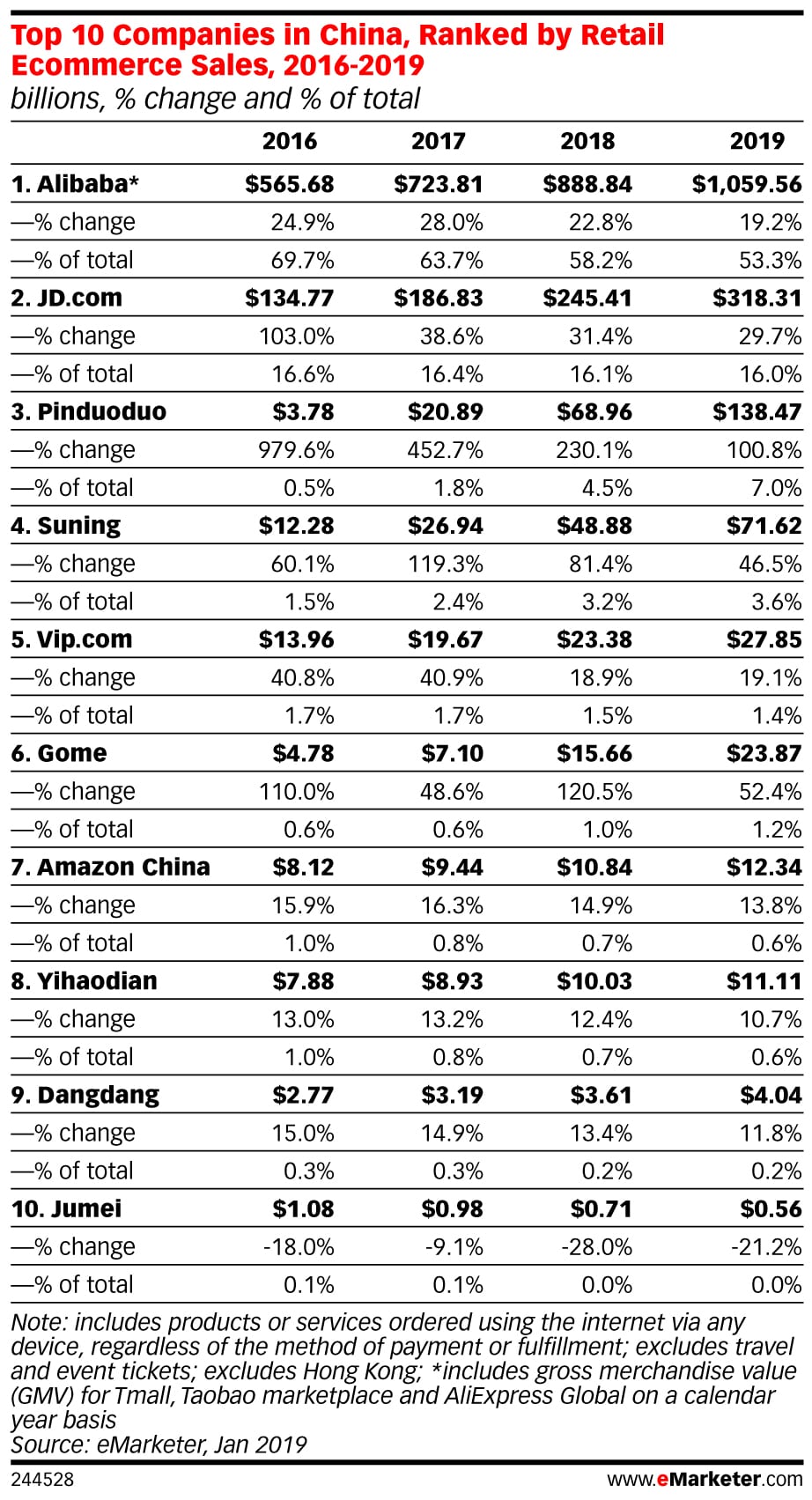China To Displace US As Leading Retail Market

China is expected to displace the U.S. this year as the leading retail market around the world.
According to eMarketer’s worldwide retail and eCommerce forecast, in 2019 China’s total retail sales are forecast to increase 7.5 percent, hitting $5.636 trillion. That compares to retail sales in the U.S. which are projected to increase 3.3 percent to $5.529 trillion. That means China’s retail sales are expected to surpass the U.S. in 2019 by more than $100 billion. eMarketer predicts China’s retail growth rate will surpass the U.S. through 2022. “In recent years, consumers in China have experienced rising incomes, catapulting millions into the new middle class,” said Monica Peart, senior forecasting director at eMarketer, in a press release announcing the latest research. “The result has been a marked rise in purchasing power and average spending per person.”
According to eMarketer, a major driver of the retail sales in China is eCommerce, with sales growing by more than 30 percent this year, projected to hit $1.989 trillion. eMarketer noted that 35.3 percent of China’s retail sales happen over the Internet, which is the highest rate around the globe. In the U.S. eCommerce accounts for 10.9 percent of retail. eMarketer noted that in 2013 China first surpassed the U.S. in terms of online sales. By the end of 2019, eMarketer predicts China will account for 55.8 percent of all eCommerce sales around the globe with that hitting 63 percent by 2022. The U.S. share of eCommerce sales is expected to decline to 15 percent by 2022.

Alibaba is expected to be the leader in terms of eCommerce sales, accounting for 53.3 percent. But its dominance has been wavering as smaller players make inroads against the leading eCommerce player in China. eMarketer pointed to social commerce platform Pinduoduo as one to watch. It has enjoyed triple-digit growth since 2016, but still owns only a small percentage of the market. “Relative newcomers and multichannel retailers continue to take share from giants Alibaba and JD.com,” Peart said. “The mature players set their sights on further international expansion. Smaller local players are finding their niche in the Chinese eCommerce market by integrating WeChat and using online-to-offline data to better target consumers.”
